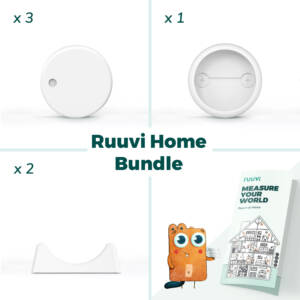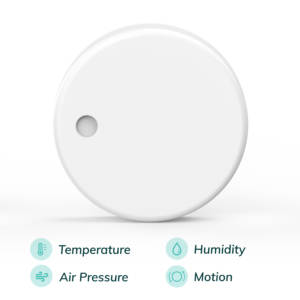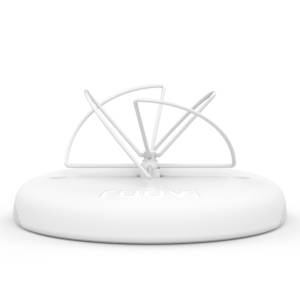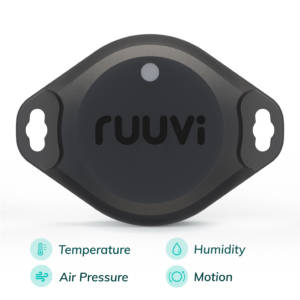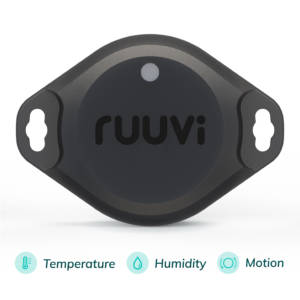Indoor air quality has emerged as a critical factor in maintaining household comfort and well-being, yet it often remains overlooked despite its direct impact on our health. The air inside our homes can frequently be more polluted than outdoor air, with numerous hidden sources contributing to poor indoor conditions that affect our respiratory health, sleep quality, and overall wellness.

Understanding Indoor Air Pollutants: What’s Really in Your Air?
Modern homes face a complex mix of indoor pollutants that can significantly impact health and comfort. Dust particles, composed of dead skin cells, fabric fibers, and dirt, can aggravate respiratory conditions and trigger allergic reactions. Pet dander adds another layer of concern for households with furry companions, often causing persistent allergy symptoms.
Volatile Organic Compounds (VOCs) represent one of the most concerning categories of indoor pollutants. These chemicals evaporate at room temperature and originate from everyday products including paints, cleaning agents, furniture, cosmetics, and building materials. Common VOCs found in homes include benzene, formaldehyde, toluene, and xylene, with exposure levels indoors typically 10 times higher than outdoors.
Health effects from VOC exposure can range from immediate symptoms like headaches, eye irritation, and respiratory problems to long-term concerns including liver and kidney damage. Research indicates that VOCs have a medium-sized effect on pulmonary diseases, with studies showing increased asthma onset and wheezing symptoms in exposed individuals.
Particulate matter, particularly PM2.5 particles smaller than 2.5 microns, can penetrate deep into lungs and even enter the bloodstream. These tiny particles contribute to heart disease, asthma, and other serious health conditions. Meanwhile, excess moisture creates ideal conditions for mold and mildew growth, releasing spores that worsen allergies and respiratory health.
The Science Behind Optimal Indoor Conditions
Maintaining proper environmental conditions forms the foundation of healthy indoor air. Temperature control plays a crucial role in comfort and health, with optimal indoor temperatures supporting both physical well-being and cognitive performance. Humidity levels between 30-50% help prevent mold growth while avoiding the problems associated with overly dry air.
Research demonstrates that balanced humidity levels are essential for maintaining effective immune defenses, particularly the mucociliary clearance process that helps trap and clear pathogens from our respiratory system. Proper humidity also reduces the survival rate of airborne viruses and supports overall respiratory health.
Air pressure monitoring provides valuable insights into weather changes and ventilation effectiveness. Modern sensor technology can detect subtle pressure variations that indicate approaching weather fronts or ventilation system performance issues.

Proven Strategies for Healthier Home Air
Enhance Ventilation and Airflow
Natural ventilation remains one of the most effective methods for improving indoor air quality. Opening windows regularly allows fresh air circulation and helps expel accumulated pollutants, especially during high-emission activities like cooking or cleaning. In moisture-prone areas such as kitchens and bathrooms, exhaust fans provide targeted humidity control and improved airflow.
Strategic ventilation timing can maximize air quality benefits while minimizing energy costs. Advanced monitoring systems now enable homeowners to optimize ventilation based on real-time air quality data rather than fixed schedules.
Control Humidity Levels
Maintaining balanced humidity requires both monitoring and active management. Humidifiers add necessary moisture in dry conditions, while dehumidifiers remove excess humidity that promotes mold growth. Natural humidity control methods include strategic placement of water bowls, indoor plants, and proper ventilation management.
Seasonal humidity challenges require different approaches throughout the year. Winter heating systems often create overly dry conditions, while summer weather can introduce excessive moisture that requires active management.
Reduce Pollutant Sources
Product selection significantly impacts indoor air quality. Choosing low-VOC or zero-VOC paints, cleaning supplies, adhesives, and furniture helps minimize harmful chemical emissions. Reading product labels and selecting environmentally friendly alternatives can dramatically reduce indoor pollutant loads.
Cleaning practices using HEPA-filtered vacuum cleaners effectively remove fine particles and allergens from carpets and upholstery. Regular dusting and mopping with appropriate cleaning solutions helps maintain low allergen levels.
Indoor plants offer natural air purification benefits, with certain species like peace lilies, spider plants, and snake plants particularly effective at removing toxins. These biological air filters provide continuous pollutant removal while adding aesthetic value to living spaces.

The Power of Real-Time Air Quality Monitoring
Modern air quality monitoring technology has revolutionized how homeowners can understand and manage their indoor environment. Smart sensors now provide real-time data on multiple air quality parameters, enabling immediate responses to changing conditions.
Comprehensive monitoring should include temperature, humidity, VOC levels, particulate matter concentrations, and carbon dioxide levels. Advanced systems can track these parameters continuously and provide alerts when conditions exceed healthy thresholds.
Data-driven insights from monitoring devices help identify patterns and pollution sources that might otherwise go unnoticed. This information enables targeted interventions and optimization of environmental control systems.
Health Benefits of Improved Indoor Air Quality
Respiratory health improvements represent the most immediate benefits of better indoor air quality. Reduced exposure to VOCs, particulate matter, and allergens leads to fewer asthma attacks, less respiratory irritation, and improved lung function.
Sleep quality enhancement often follows air quality improvements, as cleaner air reduces nighttime respiratory disturbances and promotes more restful sleep. Optimal temperature and humidity levels further support healthy sleep patterns.
Cognitive performance benefits emerge from reduced exposure to pollutants that can cause headaches, fatigue, and difficulty concentrating. Proper ventilation ensures adequate oxygen levels while removing harmful compounds that impair mental function.
Practical Implementation: Getting Started
The assessment phase begins with understanding current conditions through baseline measurements of key air quality parameters. Professional air quality testing or consumer-grade monitoring devices can provide initial insights into problem areas.
Gradual improvements often prove more sustainable than attempting comprehensive changes all at once. Starting with simple ventilation improvements and product substitutions builds momentum for larger interventions.
Monitoring and adjustment ensures that implemented changes achieve desired results. Regular data review helps identify what works best for specific homes and lifestyles.
Seasonal Considerations and Special Circumstances
Winter challenges include dry air from heating systems and reduced ventilation due to closed windows. Humidification and strategic ventilation during milder periods help maintain air quality.
Summer concerns focus on humidity control and managing increased VOC emissions from heat-activated sources. Air conditioning and dehumidification become essential tools during humid periods.
Special situations such as renovation projects, new furniture introduction, or illness require temporary air quality management strategies. Increased ventilation and temporary air purification can help manage short-term pollutant spikes.
Building Long-Term Air Quality Success
Habit formation ensures that air quality improvements become part of daily routines rather than temporary fixes. Regular ventilation, consistent cleaning schedules, and mindful product choices create lasting benefits.
Technology integration with modern monitoring systems provides ongoing feedback and motivation for maintaining healthy indoor conditions. Real-time data helps reinforce positive behaviors and identify emerging issues quickly.
Community awareness spreads air quality knowledge to family members and visitors, creating shared responsibility for maintaining healthy indoor environments. Education about indoor air quality helps everyone contribute to better conditions.
Conclusion: Your Path to Healthier Indoor Living
Improving indoor air quality represents one of the most impactful investments in family health and comfort. By understanding pollutant sources, implementing proven strategies, and leveraging modern monitoring technology homeowners can create significantly healthier indoor environments.
The combination of traditional approaches like proper ventilation and cleaning with advanced sensor technology creates comprehensive air quality management systems. As monitoring technology continues to advance, homeowners gain increasingly powerful tools for understanding and optimizing their indoor air quality.
Taking control of indoor air quality requires commitment to ongoing monitoring and management, but the health benefits make this effort worthwhile. Whether starting with simple ventilation improvements or implementing comprehensive monitoring systems, every step toward better indoor air quality contributes to a healthier, more comfortable home environment.
With proper knowledge, appropriate tools, and consistent attention to air quality factors, any home can become a healthier, more resilient place to live and thrive.
FAQ: Home Air Quality
What is indoor air quality and why does it matter?
Indoor air quality (IAQ) refers to the air quality within and around buildings, especially as it relates to the health and comfort of occupants. Good IAQ is essential for respiratory health, sleep quality, and overall well-being, as poor air can cause allergies, asthma, headaches, and other health issues.
What are the most common indoor air pollutants?
Common pollutants include dust, pet dander, mold spores, volatile organic compounds (VOCs) from cleaning products and furniture, particulate matter (PM2.5), and carbon dioxide (CO2). Excess humidity can also promote mold growth and worsen air quality.
What are the optimal temperature and humidity levels for a healthy home?
Optimal bedroom temperature is around 20-25°C , and relative humidity should be between 30% and 50% for comfort and health. These levels help prevent mold, reduce allergens, and support better sleep.
How can I reduce indoor air pollutants?
Effective strategies include:
- Source control: Use low-VOC products and avoid smoking indoors.
- Improved ventilation: Open windows, use exhaust fans, and consider mechanical ventilation.
- Humidity management: Use humidifiers or dehumidifiers as needed.
- Regular cleaning: Vacuum with HEPA filters, dust, and mop regularly.
How do I set up and use a Ruuvi sensor?
Ruuvi sensors are easy to set up: Just place them in the desired location and connect to the Ruuvi Station app on your smartphone. You can view real-time data, set alerts, and track historical trends. For remote monitoring beyond Bluetooth range, use the Ruuvi Gateway.
What if I have questions about my specific air quality concerns?
If you notice persistent symptoms or unusual air quality readings, consult a healthcare professional or consider professional air quality testing. Ruuvi’s support and community resources can also help you troubleshoot and optimize your setup.
